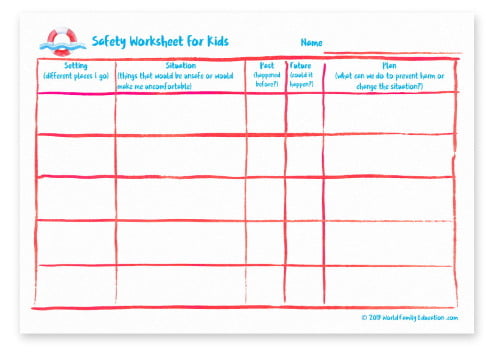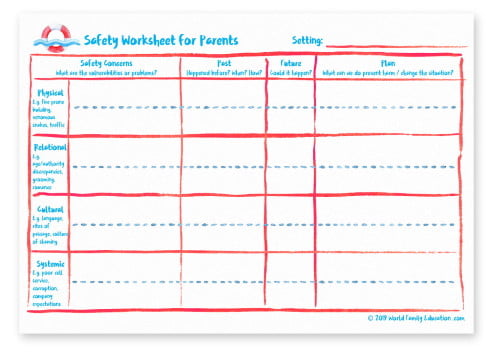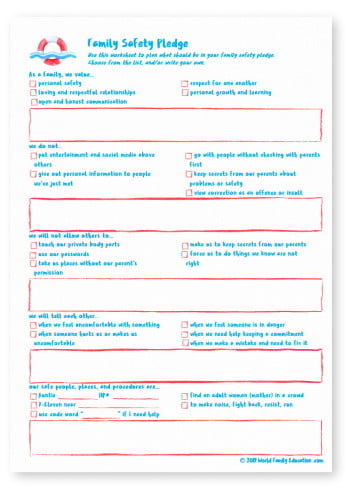By World Family Education
If you have read World Family Education’s Keeping Your Family Safe While Living Cross-Culturally page, you will have some good ideas for identifying your family’s vulnerabilities, communicating with your family, and making a plan. Here we offer some practical tools to get these processes going.
You can use these PDF files by printing them and filling them out by hand or by saving them and filling them out digitally.
Safety Worksheet for Kids
Safety Worksheet for Parents
Family Contract Worksheet
Worksheet Explanations
Safety Worksheet for Kids
Parents should work through this worksheet with each of their kids individually. Younger kids may need assistance, and parents may work through it with them. Older kids/teens may prefer to complete it alone then discuss it with you.
This worksheet is the starting point for conversation. Be careful to listen well, and resist the urge to rationalize or solve the problem on the spot. Let them work through possible solutions/responses that make sense to them (you will learn a lot from this). This process will help you identify safety concerns from your kids’ perspective and will help you identify areas to dig deeper using the Safety Worksheet for Parents (below).
Safety Worksheet for Parents
Parents should complete this worksheet together. Fill out one sheet for each setting you want to explore more deeply (perhaps as a response to the Safety Worksheet for Kids above). Discuss and note how the setting is impacted by each type of safety concern (physical, relational, cultural, systemic).
If you can identify things that increase your family’s vulnerability, write them down. Talk through the history, probability, and plan for these vulnerabilities. Each family functions within a unique mix of cross-cultural relationships, organization culture, role expectations, and physical settings. It is very important to understand these dynamics and how they impact our families.
Family Contract Worksheet
The next part of the conversation is for the whole family. In a relaxed, collaborative setting, use this worksheet to talk through and identify your family values, things your family doesn’t do and will not allow others to do, and information you will share with each other. Also identify your safe people and procedures. This worksheet includes some examples, but we suggest letting the family start by brainstorming these areas. Many of the suggestions will already be part of your family culture, and kids can identify them with some help.
This is a great opportunity for discussion and explaining the special values and purpose your family has. Once you have completed your list, you can use it to create a family contract that can be ratified by the family members and referred to as a standard of family values and procedures.





